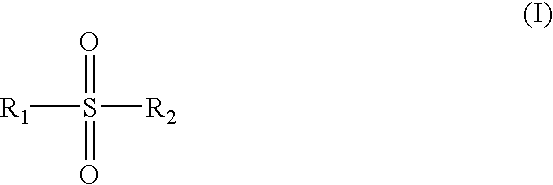Method of Producing Rough Strains of Bacteria and Uses Thereof
a technology of bacteria and strains, which is applied in the field of bacteria strains identified in this way, can solve the problems of not being able to induce all mycobacteria strains, methods that have not been able to induce rough strains, and methods that have not been able to achieve rough strains of i>mycobacterium obuense, etc., to achieve the effect of promoting healthy immune system and restoring normal immune balan
- Summary
- Abstract
- Description
- Claims
- Application Information
AI Technical Summary
Benefits of technology
Problems solved by technology
Method used
Image
Examples
example 1
Induction of a Stable Rough Variant of Mycobacterium obuense Type Strain (ATCC 27023)
[0360]Mycobacterium obuense type strain ATCC 27023 is only represented by this strain in the international collections. The strain is smooth in cultural character and is not known to throw rough variants.
experiment 1
o Middlebrook 7H11 Agar.
[0361]Six consecutive subcultures of Mycobacterium obuense type strain ATCC 27023 onto Middlebrook 7H11 agar produced smooth colonies only.
Experiment 2. Culture on to Middlebrook 7H11 Agar with Different Concentrations of Added 4,4′-Diaminodiphenyl Sulfone
Experiment 2, Part a
[0362]Mycobacterium obuense type strain ATCC 27023 was grown Middlebrook 7H11 medium comprising different concentrations of Dapsone™. Results are recorded in Table 1.
TABLE 1Growth on different Dapsone ™ concentrations / mlof Middlebrook 7H11 medium.μg Dapsone ™ / ml Middlebrook7H11 mediumObserved growth50no growth40no growth20no growth10no growth53 smooth colonies0confluent smooth growth
experiment 2
, Part b
[0363]Mycobacterium obuense type strain ATCC 27023 was grown Middlebrook 7H11 medium comprising different concentrations of Dapsone™. Results are recorded in Table 2.
TABLE 2Growth on different Dapsone ™ concentrations / mlof Middlebrook 7H11 medium.μg Dapsone ™ / ml Middlebrook7H11 mediumObserved growth5small smooth colonies4small smooth colonies3confluent smooth colonies0confluent smooth colonies
Experiment 2, Part c Mycobacterium obuense type strain ATCC 27023 was grown Middlebrook 7H11 medium comprising different concentrations of Dapsone™. Results are recorded in Table 3.
TABLE 3Growth on different Dapsone ™ concentrations / mlof Middlebrook 7H11 medium.μg Dapsone ™ / ml Middlebrook7H11 mediumObserved growth12mostly rough colonies10mostly rough colonies7.5few rough colonies,mostly smooth colonies5few rough colonies,mostly smooth colonies0confluent smooth colonies
[0364]Rough colonies were carefully picked off from the 12 μg Dapsone™ / ml culture and subcultured repeatedly on Middlebr...
PUM
| Property | Measurement | Unit |
|---|---|---|
| pH | aaaaa | aaaaa |
| concentration | aaaaa | aaaaa |
| concentration | aaaaa | aaaaa |
Abstract
Description
Claims
Application Information
 Login to View More
Login to View More - R&D
- Intellectual Property
- Life Sciences
- Materials
- Tech Scout
- Unparalleled Data Quality
- Higher Quality Content
- 60% Fewer Hallucinations
Browse by: Latest US Patents, China's latest patents, Technical Efficacy Thesaurus, Application Domain, Technology Topic, Popular Technical Reports.
© 2025 PatSnap. All rights reserved.Legal|Privacy policy|Modern Slavery Act Transparency Statement|Sitemap|About US| Contact US: help@patsnap.com



